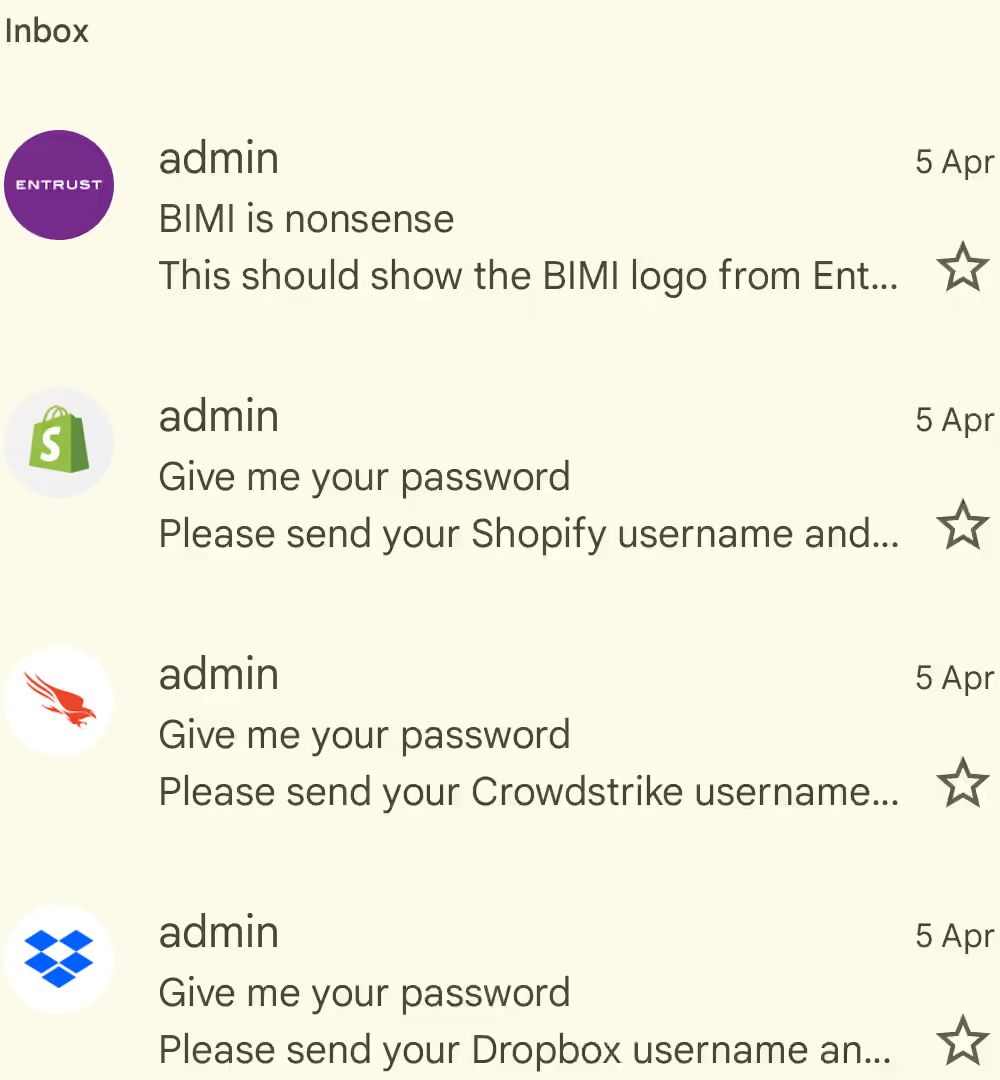16 years of CVE-2008-0166
Debian OpenSSL Bug
Breaking DKIM and BIMI in 2024
https://16years.secvuln.info/
- ------------------------------------------------------------------------ Debian Security Advisory DSA-1571-1 security@debian.org http://www.debian.org/security/ Florian Weimer May 13, 2008 http://www.debian.org/security/faq - ------------------------------------------------------------------------ Package : openssl Vulnerability : predictable random number generator Problem type : remote Debian-specific: yes CVE Id(s) : CVE-2008-0166 Luciano Bello discovered that the random number generator in Debian's openssl package is predictable. This is caused by an incorrect Debian-specific change to the openssl package (CVE-2008-0166). As a result, cryptographic key material may be guessable.
Keys depended on a limited number of factors like the PID and the architecture, limiting the number of possible keys to a few ten thousand
Old bugs never die

There was another one in 2021 (with a key generated by OpenSSH)
In 2021, I started badkeys
Tool and website to easily check cryptographic public keys for known vulnerabilities
Detecting the Debian OpenSSL bug
Existing tools and lists of affected keys were not exactly great
- Some of the old tools no longer worked on modern systems
- All collections of affected keys were incomplete
- Information about the exact details of the bug was confusing, incomplete, and sometimes wrong
Debian OpenSSL Bug variations
- PID (0 to 32767)
- OpenSSL and OpenSSH
- Different output if .rnd file exists
- Older and newer OpenSSL versions differ if the .rnd file does not exist
- Architectures: 32/64 bit, x86 vs. ppc/others vs. mips
- Key size
- RSA, DSA, Elliptic Curves (!)
Due to the amount of possibilities, it is close to impossible to cover everything, but badkeys detects all reasonably plausible variations
A few weeks ago
"I should test DKIM keys with badkeys"
DKIM
TXT record at key1._domainkey.hboeck.de:
v=DKIM1; k=rsa; p=MIIBIjANBgkqhkiG9w0BAQE[...]E-Mail header:
DKIM-Signature: v=1; a=rsa-sha256; c=relaxed/relaxed; d=hboeck.de; s=key1; t=1715197611; bh=Z9fPSuWvmaUL/fgn9g0k2ORYPJe3Y3Vc5NiKvQJXc2w=; h=Date:From:To:Subject:Message-ID:MIME-Version:Content-Type: Content-Transfer-Encoding; b=TNyZHQd[...]How to scan DKIM
Get lots of e-mails and extract selector/domain combinations
How to scan DKIM (better)
Try common selectors like dkim, mail, etc., with top domains
Scanning Tranco 1 Top Million list
Around 350,000 TXT records with a valid RSA key.
855 vulnerable to Debian OpenSSL bug (0.24%).
Domains with vulnerable keys
@cisco.com, @oracle.com, @skype.net, @github.partners, @partner.crowdstrike.com, @partners.dropbox.com, @1password.com, @seznam.cz
Why?
- 2006: Debian OpenSSL bug was introduced
- 2007: DKIM was published (RFC 4870)
- 2008: Debian OpenSSL bug was found
Most affected keys were configured as a CNAME to a host belonging to the company Cakemail
Trying to disclose a security issue to security@cakemail.com
We're writing to let you know that the group you tried to contact (security) may not exist, or you may not have permission to post messages to the group.
You would think that "I have your private key" is the kind of vulnerability report that could not be any clearer
Plenty of bad experiences with bug bounty programs
The worst: GitHub
There were these logos...

BIMI
Brand Indicators for Message Identification
How does BIMI work?
If you want a BIMI logo you have to pay a lot of money to Entrust or Digicert
💰💰💰💰💰
How does BIMI work on a technical level?
BIMI requires DKIM and DMARC (with p=reject/quarantine)
BIMI TXT record for default._bimi.entrust.com
v=BIMI1;l=https://bimi.entrust.net/entrust.com/logo.svg;a=https://bimi.entrust.net/entrust.com/certchain.pem
A logo (SVG) and a certificate (X.509)
The certificate contains a cryptographic key that is not used at all
If you can break DKIM, you can also break BIMI
entrust.com was among the hosts with a DKIM key vulnerable to the Debian OpenSSL bug
BIMI is based on an extremely problematic specification
draft-brand-indicators-for-message-identification-05
"other documents" and "elsewhere"
- Further restrictions apply to the SVG; these are documented elsewhere.
- Other documents may cover these topics.
- Out of Scope: The explicit mechanisms used by Verifying Protocol Clients - this will be deferred to a later document.
BIMI protocol
- Server checks record/logo/certificate and sets certain headers (BIMI-Indicator, BIMI-Location)
- Mail client trusts these headers
How does the mail client know these headers came from its mail server and not from the sender?
They understood the security problem and provided a fix that does not really work
Combination of BIMI-supporting client and non-BIMI-supporting server create an inherent security flaw
Some justifications I heard
- BIMI was not meant to be implemented by "normal" mail clients (only by tightly integrated ones like Gmail)
- No mail client actually implements the spec
- The existing implementations do not use the spec
8.7. CGI scripts in Indicator payload
MTAs and MVAs should aggressively police Indicators to ensure they are the Indicators they claim to be, are within appropriate size limits, and pass other sanity checks.
Does anyone understand what that means?
BIMI SVG files
BIMI has defined a profile with a subset of SVG
SVG Tiny PS (Portable/Secure)
That is not entirely unreasonable, but...
How do you create such an SVG file?
The recommendation is to first create a file with a different, but similar profile in Adobe Illustrator, and then use a text editor to manually change it to match the SVG Tiny PS profile
Based on what I learned about BIMI, I have a recommendation for e-mail services, mail server developers, and mail client developers
Do not implement BIMI
I am not done with BIMI yet
Entrust issued over 200 certificates not following the SVG Tiny Portable/Secure profile
Entrust is currently already under fire for poor handling of various policy violations by their WebPKI CA
https://wiki.mozilla.org/CA/Entrust_Issues
Final words
- Old bugs never die, remember that
- badkeys is free software, but not yet packaged in Debian
- BIMI is total garbage